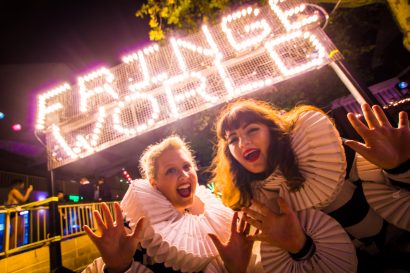New interactive displays underline the status of Gwoonwardu Mia Gascoyne Aboriginal Heritage and Cultural Centre but, as Victoria Laurie writes, its rocky history raises questions about how we value such facilities.
Cultural centre rebirth turns focus on regional riches
27 May 2022
- Reading time • 10 minutesMulti-arts
More like this
- Halloween special: How to make blood and other stage tricks
- Seadragon weaves magic spell
- Spring into the school holidays
Gwoonwardu means “where the fresh water meets the sea water”, and the revamped Gwoonwardu Mia Gascoyne Aboriginal Heritage and Cultural Centre, relaunched this week, celebrates the rich Indigenous culture of Gascoyne River country.
On the clay flats around Carnarvon, tiny dirt mountains appear in their thousands as the handiwork of burrowing bees. They are a giant bee species that Antoinette Roe knows well – unique to the Carnarvon region where she lives and almost unknown elsewhere.
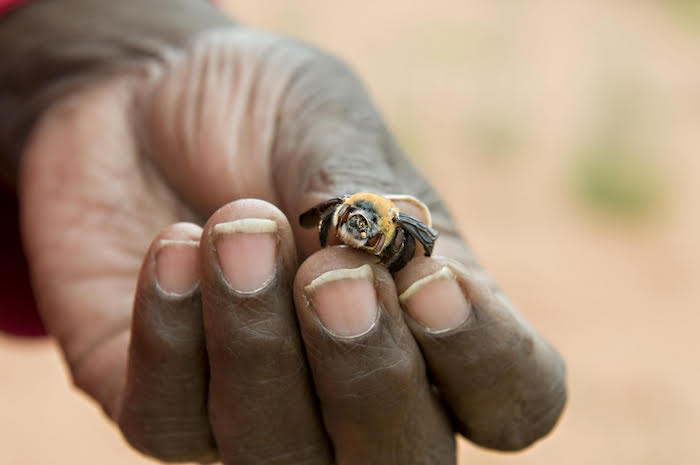
“There’s a patch close to the beach and when I was a kid riding horses, we’d ride around them and leave them alone,” she recalls.
One time, Roe took a group of elders out to the flats to record a short film about the burrowing bees, whose wingspan can reach 4cm. The elders explained each mound contained a white grub. They dug it up, mound and all, and threw it on a campfire. From the ashes they extracted a delicious morsel.
“They say it’s like candy,” says Roe, a curatorial staff member at the Gascoyne Aboriginal Heritage and Cultural Centre, or Gwoonwardu Mia, in Carnarvon, 900km north of Perth. This week, Gwoonwardu Mia celebrates a kind of rebirth – a series of new or upgraded displays that, like Roe’s link to the burrowing bees, draws on deep cultural knowledge.
This is no mere gloss – the Western Australian Museum has partnered with the centre to install a state-of-the-art touchscreen table which brings to life Gwoonwardu Ganyarra, the story of the swirling floodwaters of the Gascoyne River.
Other displays are the Sky Dome, with a time-lapse video of a starry sky and commentary about the ancient art of Aboriginal stargazing. Then there’s a shell necklace that was found in a cave near Exmouth. At 30,000 years old, it is surely one of Australia’s oldest pieces of jewellery.
Telling Gascoyne stories
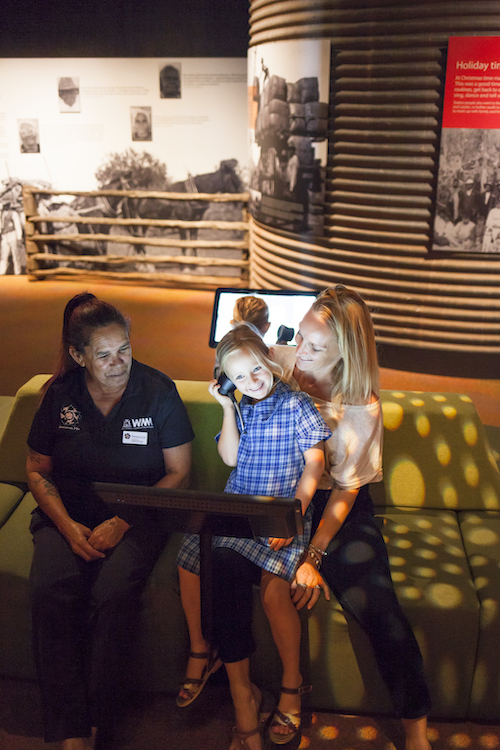
There’s a new listening chair to curl up in and listen to rich oral histories. “Untouchable Stories of the Gascoyne” is the result of countless hours spent by Roe and her co-worker Norma Lee with five elders – one each from Yinggarda, Bayungu, Malgana, Thadgari and Thalanyji language groups.
The five – Gwen Peck, Betty Fletcher, Bella Randall, John Dale and Thomas Dodd – can provide first person accounts of Carnarvon’s past. One grew up on a mission, another a reserve or in town, others played a role in the Gascoyne’s pastoral industry. Each audio story is accompanied by vision that can be viewed on the touchscreen table, linking the story, the person and the land.
Roe was born and bred in Carnarvon. “It was a good place to grow up, everybody mixed with everybody else. My grandfather was a stockman, my grandmother worked as a cleaner in the pubs,” she says.
She’s also an artist, and Gwoonwardu Mia’s shop sells artworks under Indigenous Art Code ethical terms. It also holds activities and workshops that saw an entire aged care facility bring its residents in.
A cautionary tale
Gwoonwardu Mia is a classic example of a cultural facility that nurtures tourism, a healthy local creative sector, shared knowledge of the past and a general sense of wellbeing. And it’s somewhere to go, a vital destination for anyone who has driven around country towns in search of something to do.
But behind Gwoonwardu Mia’s success is a cautionary tale about not setting up such facilities to fail. It first opened in 2005 as a multipurpose centre that celebrated the culture and country of the Gascoyne region. It won awards, became an incubation hub for Indigenous businesses, artists and performing and visual art, and boasted an ethnobotanical garden. And then in 2015 it went insolvent and closed.
The WA Museum took it over in 2019, refurbished it and reopened the doors just as COVID hit. And now Gwoonwardu Mia has had a facelift, in consultation with renowned designer Scott Watson from Multistory. The existing “touch table”, for example, tells a new Aboriginal story of two sacred saltwater and freshwater snakes, Bubawari and Jingabirdi, and how their relationship affected the land and waterways around the Gascoyne River.
WA Museum’s regional manager Jessica Machin says the refurbishment has seen the central gallery hung with Aboriginal paintings, while other artists’ work is once again stocked in the centre’s shop. “We’ve already doubled visitor numbers and had a 200 percent increase in shop sales,” Machin says.
“This launch in a way marks the start of a series of other launches to come down the track.”
Commitment to culture?
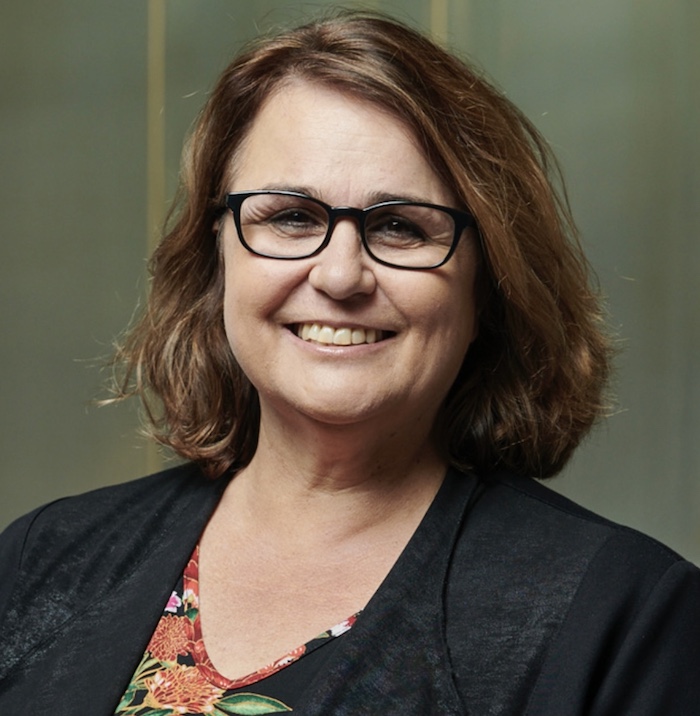
Like other remote towns, Carnarvon is in dire need of such input. The town’s population has halved in recent years, and Cyclone Seroja destroyed one of the few tourist features, the One Mile Jetty.
“Carnarvon does have a space museum, but Gwoonwardu Mia is a very important part of the reactivation of tourism,” says Machin. “There’ll be a big celebration of the solar eclipse in Exmouth next year, so we’re developing a Gascoyne Aboriginal astro-tourism and dark sky tourism project in response.”
But what does this rise and fall – and rise again – of Gwoonwardu Mia say about the state’s commitment to culture?
Public cultural centres and museums require substantial support – they are almost never financially self-sustaining. For example, tourism in Carnarvon is seasonal so Gwoonwardu Mia’s financial profile is affected by the reality of seasonal change, cost pressures and uncertain revenue.
The WA Museum is seeking ways around this, but has been informed that current government funding runs out in mid-2024. A pithy question arises – why is a state government with surplus billions from resource income insisting that Gwoonwardu Mia is “returned” to the community in the next five or more years? That’s code for “you pay the bills”.
The centre provides an incalculable benefit to Carnarvon’s community in skill-building and niche jobs.
Building regional skills
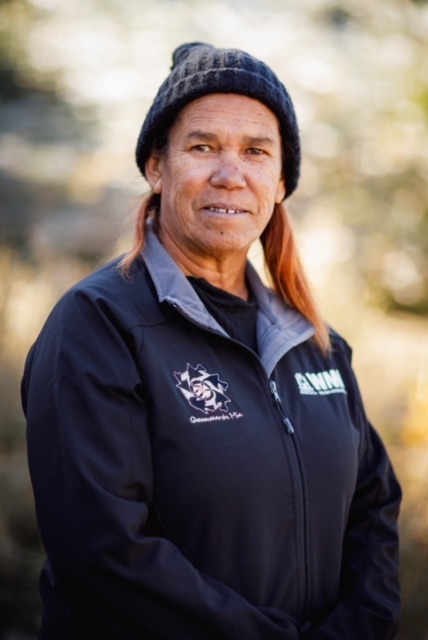
As a young woman, Roe never thought that working as a curator and operations manager in a museum was a possibility. She rode horses as a strapper and got her certificate two in hairdressing until one day she was asked to assist with art sales in the centre shop. She graduated to learning curatorial and archiving skills, and eventually helped install the prestigious “Songlines: Tracking the Seven Sisters” travelling exhibition when it opened in 2021 at the WA Museum Boola Bardip.
Both Roe and Lee have honed their curating skills as part of an emerging curators program, set up in 2011 by the WA Museum and now delivered in partnership with the National Museum of Australia.
“Our curators participated in a 12-month program which taught them skills in curation, oral history, archiving,” explains Machin. “It provides professional training in museum practices and develops collaborative partnerships with WA’s First Nations people.”
Roe considers it an honour “to record my elders and listen to their stories from back in the day. It is also for the future generations to look, listen and learn from our elders that are here with us today.”
She looks forward to a new burrowing bee education and cultural tourism project, which the WA Museum Foundation has agreed to fund. It will be visited by five generations of her family, from her 95-year-old nanna to her youngest grandchild.
“My five grandchildren love coming out with me to see the bees, so it’s something I’m handing on to them,” she says.
“This town needs a centre like this to educate people. People born and bred in Carnarvon come in and say ‘our parents didn’t tell us about this!’ Our kids and grandkids aren’t being taught about local history in schools. So we must do it.”
Find out more about the Gwoonwardu Mia Gascoyne Aboriginal Heritage and Cultural Centre.
Pictured top: The Gwoonwardu Mia Gascoyne Aboriginal Heritage and Cultural Centre. All photos courtesy Gwoonwardu Mia/WA Museum
Get the latest arts news and reviews from Seesaw in your inbox
Like what you're reading? Support Seesaw.



